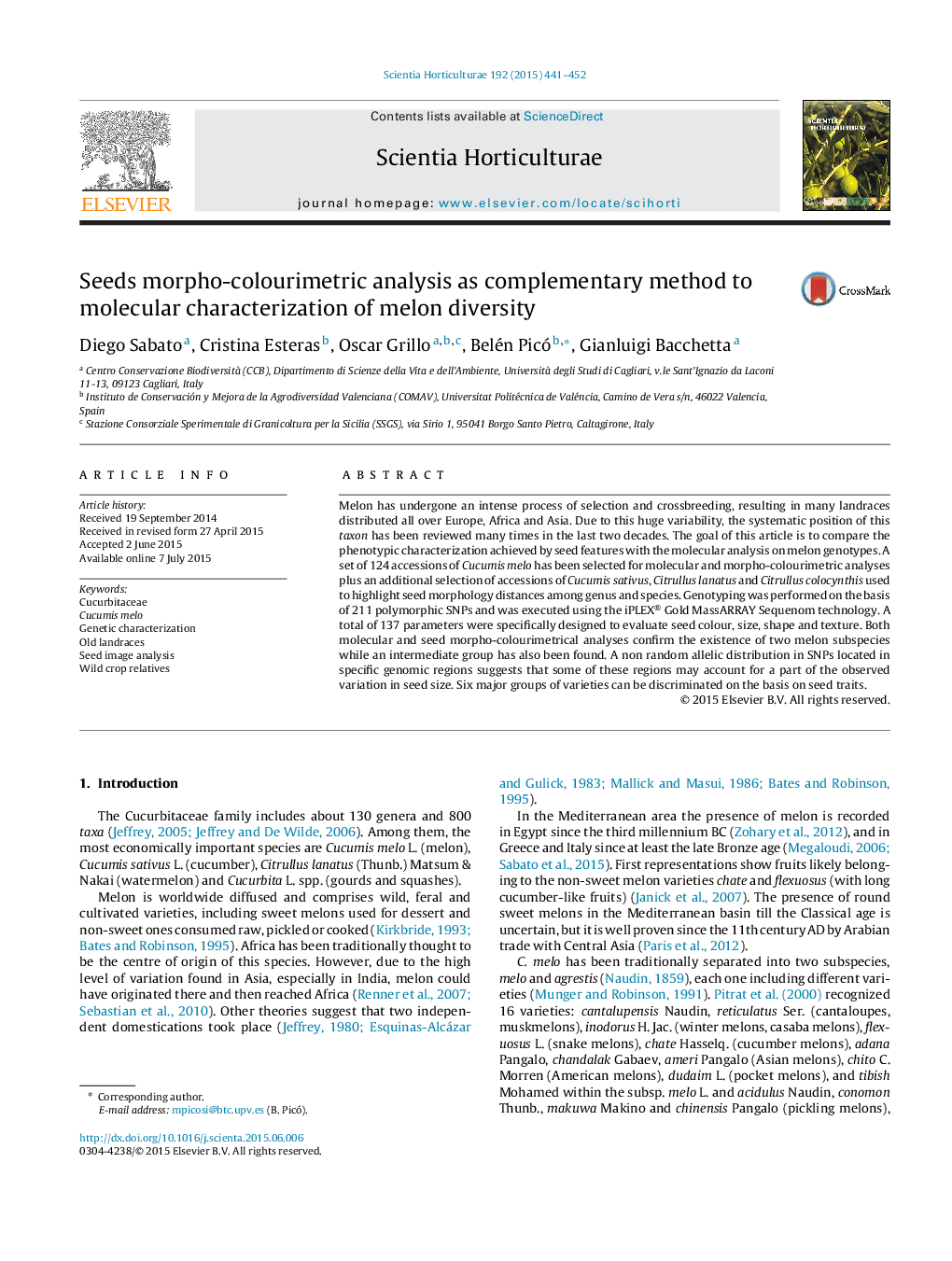| کد مقاله | کد نشریه | سال انتشار | مقاله انگلیسی | نسخه تمام متن |
|---|---|---|---|---|
| 4566281 | 1628806 | 2015 | 12 صفحه PDF | دانلود رایگان |
• We analyzed the genetic diversity and morpho-colourimetric seeds traits of 124 accessions of Cucumis melo, originated from 48 countries.
• An additional selection of accessions of Cucumis sativus, Citrullus lanatus and Citrullus colocynthis have been used to study seed morphology distances among genus and species.
• Molecular and morpho-colourimetric analysis are in general agreement, confirming the existence of two melon subspecies, while an intermediate group has also been detected.
• Six major groups of varieties can be discriminated on the basis on seed traits.
• A non random allelic distribution in SNPs suggests that some specific genomic regions may play a role in seed size variation.
Melon has undergone an intense process of selection and crossbreeding, resulting in many landraces distributed all over Europe, Africa and Asia. Due to this huge variability, the systematic position of this taxon has been reviewed many times in the last two decades. The goal of this article is to compare the phenotypic characterization achieved by seed features with the molecular analysis on melon genotypes. A set of 124 accessions of Cucumis melo has been selected for molecular and morpho-colourimetric analyses plus an additional selection of accessions of Cucumis sativus, Citrullus lanatus and Citrullus colocynthis used to highlight seed morphology distances among genus and species. Genotyping was performed on the basis of 211 polymorphic SNPs and was executed using the iPLEX® Gold MassARRAY Sequenom technology. A total of 137 parameters were specifically designed to evaluate seed colour, size, shape and texture. Both molecular and seed morpho-colourimetrical analyses confirm the existence of two melon subspecies while an intermediate group has also been found. A non random allelic distribution in SNPs located in specific genomic regions suggests that some of these regions may account for a part of the observed variation in seed size. Six major groups of varieties can be discriminated on the basis on seed traits.
Figure optionsDownload as PowerPoint slide
Journal: Scientia Horticulturae - Volume 192, 31 August 2015, Pages 441–452
